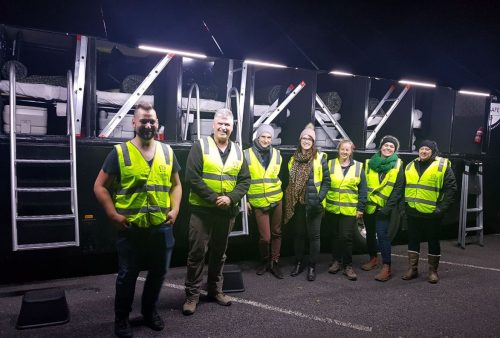
VOLUNTEERS are a desperate shortage for a new Canberra sleepbus that houses an alarmingly number of older homeless women that is growing exponentially.
The National Council of Women ACT raised $100,000 to bring the pink bus to Canberra and was forced to ask the territory’s supplier of household water to fund the cost of running the sleepbus project.
The custom-fitted 22-bed vehicle equipped with mod-cons is the first of its kind in Australia and will run for only three nights of the week unless more assistance can be found.
“As soon as we have enough volunteers, we can go seven nights a week,” ACT council branch president Juanita Flett said.
The recent unveil of the project ahead of its road test on June 12 highlights an increasing but overlooked problem in the ACT, with a rise in homeless women aged over 55 years.
The affiliate organisation for a litany of women’s groups in Canberra said getting women – some even with children – off the street safely was a high priority heading into the winter.
“We had homelessness as a spotlight for us, as what’s happening, what can we do and we wanted to advocate for these women,” Ms Flett said.
“There was just no emergency shelter accommodation in Canberra just for women, and it just didn’t seem there was going to be, so we started to fundraise to make it happen.”
That’s the stark reality of the changing face of homelessness.
It’s not unshaven, hiding a bottle inside a brown paper bag on a cold concrete floor.
And it’s not on the street, staring right back.
“That image of middle-aged men on the street when people say we don’t see women like that – there’s a really good reason why,” Ms Flett said.
“That is because a woman on the street is hugely vulnerable.
“They would do everything in their power to keep hidden and especially if they have got children.
“They’ll do everything to be invisible: sleeping in people’s garages, on couches, in their cars or they are just getting out of the city where they’re the most vulnerable.
“Women’s homelessness is a real problem – it’s not like it doesn’t exist.”
Ms Flett said women have become more homeless over underemployment but also a forced change of living arrangements from work, housing affordability and relationships.
More than 3000 people – mostly women – have sat on waitlists for government housing for up to three and a half years, and there’s a minimum of 30 days after registering homeless that authorities can offer a form of emergency accommodation.
“What we have found that so much of Canberra is just a paycheck or two away from really finding themselves in a problem where they could be considered homeless,” she said.
The predicament is everything that a progressive, middle-class Canberra is not.
Unaffordable housing has heavily contributed to homeless women, according to research from the council, in spite of the ACT government introducing new legislation to encourage landlords to offer cheaper housing.
“I think in the last five to 10 years, it’s really starting to get noticeable that over 55 women are the fastest growing cohort of homeless people,” she said.
“It’s not the largest cohort of homeless people, but it’s definitely the fastest.”
Go to the sleepbus.org volunteer page to sign up.
Who can be trusted?
In a world of spin and confusion, there’s never been a more important time to support independent journalism in Canberra.
If you trust our work online and want to enforce the power of independent voices, I invite you to make a small contribution.
Every dollar of support is invested back into our journalism to help keep citynews.com.au strong and free.
Thank you,
Ian Meikle, editor




Leave a Reply